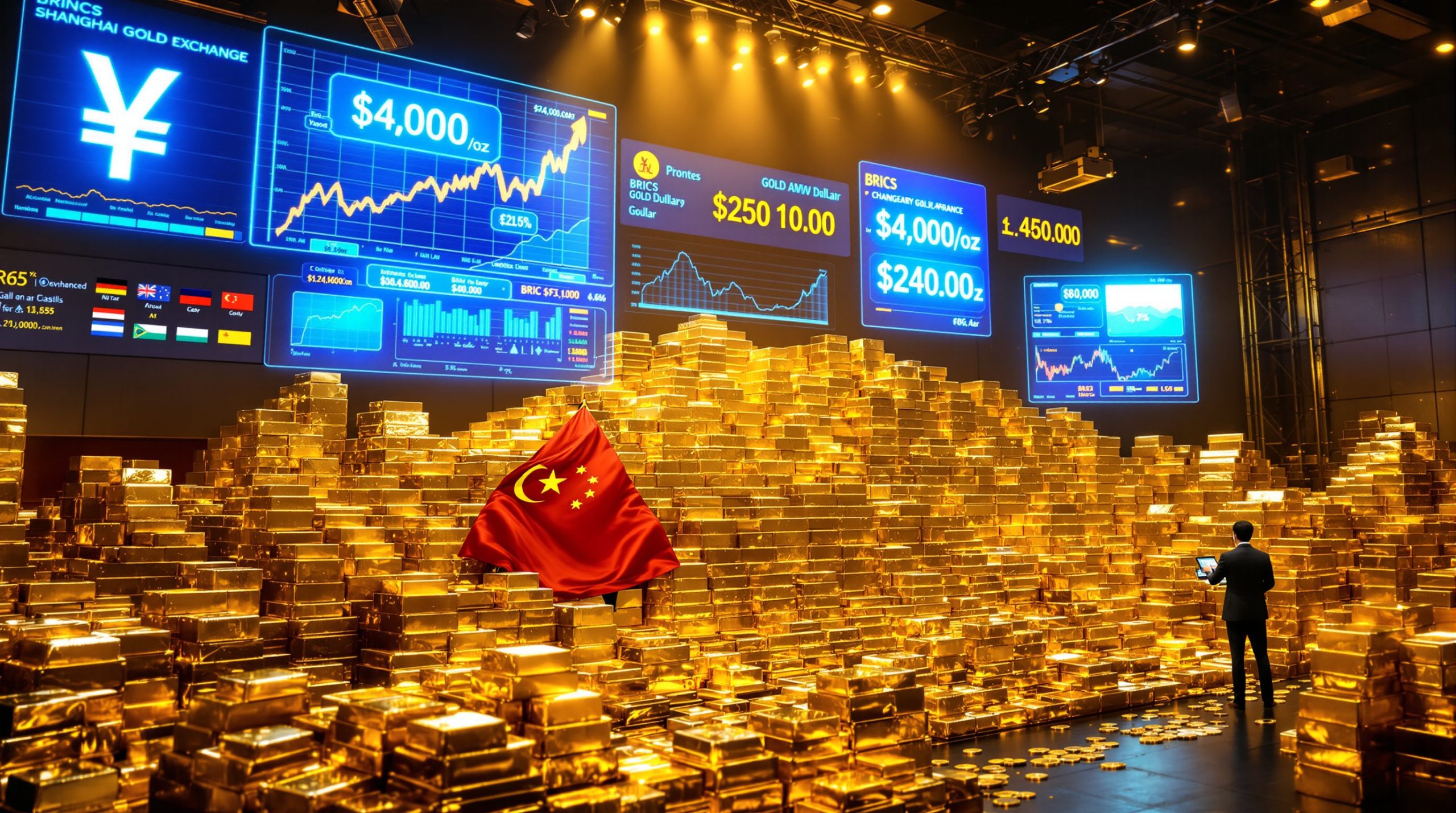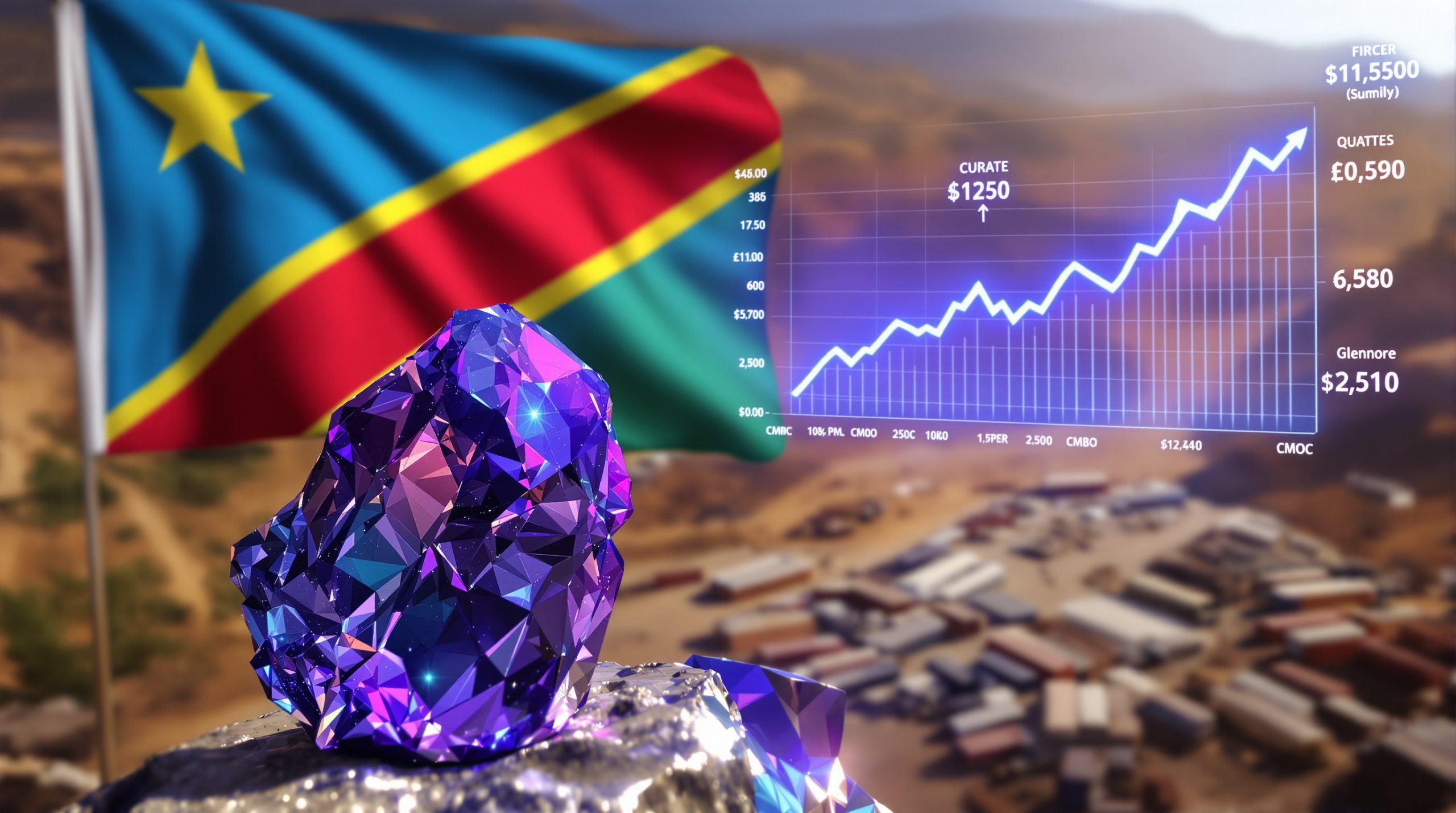What is Rubidium and Why is it Suddenly Important in Critical Minerals?
Rubidium, a relatively obscure alkali metal, has recently emerged as a critical mineral commanding significant attention in technological supply chains. With the atomic number 37, this highly reactive silvery-white metal possesses extraordinary electropositive properties that make it increasingly valuable across multiple high-tech applications. Though often overshadowed by its periodic table neighbors lithium and cesium, rubidium's unique characteristics have thrust it into the spotlight as industries scramble to secure supplies of this versatile element amid growing concerns about critical minerals energy security.
Understanding Rubidium's Properties and Applications
As one of the most electropositive elements on the periodic table, rubidium exhibits remarkable chemical reactivity that makes it particularly valuable in specialized applications. Naturally occurring alongside lithium and cesium in certain mineral formations, rubidium has traditionally been considered a relatively rare metal with limited commercial applications. However, technological advancements have dramatically expanded its utility across several strategic sectors.
The most significant applications for high-purity rubidium include:
- Quantum computing components: Rubidium atoms provide precisely controlled quantum states essential for next-generation computing architectures
- Advanced electronics manufacturing: Used in specialized photocells, night vision devices, and vacuum tubes requiring precise photoelectric properties
- Defense technology systems: Critical component in military guidance systems and sophisticated radar technologies
- Specialty glass production: Enhances optical qualities in specialized glass formulations
- Atomic clocks and precision instruments: Rubidium's extremely stable atomic transitions enable ultra-precise timekeeping essential for GPS systems and telecommunications networks
The Growing Market Value of Rubidium
The market dynamics for rubidium reveal a rapidly appreciating critical mineral with substantial growth projections. High-purity rubidium currently commands approximately US$1,060 per kilogram, representing a significant premium compared to lithium carbonate prices. This valuation reflects both the metal's scarcity and its growing importance in advanced technology applications.
"The global rubidium market is projected to grow from US$4.6 billion in 2023 to US$8 billion by 2033, representing a compound annual growth rate of 5.6%," according to industry analysts cited in the Green Technology Metals announcement.
This growth trajectory is underpinned by several factors driving rubidium's strategic importance:
- Critical mineral designation: Officially recognized as a critical mineral by the United States government, signaling its importance to national security and economic prosperity
- Japanese industrial priority: Designated as a priority resource for Japan's technology-focused industrial sector
- Limited substitution options: Few viable alternatives exist for rubidium's specialized applications, creating relatively inelastic demand
- Constrained supply chain: Current production is concentrated in a small number of locations, creating potential geopolitical supply chain vulnerabilities
The combination of growing technological applications and limited production sources has created ideal market conditions for new rubidium resources to enter the supply chain, particularly those located in politically stable jurisdictions with established mining infrastructure.
How Did Green Technology Metals Make Their Rubidium Discovery?
Green Technology Metals (GT1) initially focused its exploration efforts on lithium resources at its Seymour Project in Ontario, Canada. The company's discovery of a significant rubidium resource represents a pivotal strategic development that diversifies its mineral portfolio beyond battery metals into highly specialized technology minerals.
The Seymour Project Location and Background
The Seymour Project benefits from a strategically advantageous location in Ontario, Canada – a tier-one mining jurisdiction with established infrastructure and proximity to North American technology manufacturing centers. This geographical positioning provides significant logistical advantages for supplying both the US and Canadian markets, particularly given growing concerns about critical mineral supply chain security.
Prior exploration activities at Seymour were primarily lithium-focused, leading to the identification of the North Aubry lithium deposit in 2023. The company's systematic exploration approach included comprehensive mineral deposit analysis of the pegmatite formations – complex igneous rocks known for hosting valuable elements including lithium, tantalum, and various rare metals.
These detailed analyses revealed unexpected concentrations of rubidium that warranted further investigation, demonstrating the value of thorough geological assessment rather than single-element exploration strategies. The rubidium mineralization occurs within the same geological structures that host the lithium resources, creating potential operational synergies.
Technical Details of the Rubidium Resource
The newly identified rubidium resource at Seymour represents one of the most significant discoveries of this critical mineral globally. Key technical parameters include:
- Total resource: 8.3 million tonnes at an average grade of 0.27% rubidium oxide (Rb₂O)
- Contained rubidium oxide: Approximately 23,000 tonnes
- High-grade component: 3.4 million tonnes at 0.40% Rb₂O, containing approximately 13,600 tonnes
- Resource classification: 6.2 million tonnes in the Indicated category and 2.1 million tonnes in the Inferred category
The geological characteristics of the deposit show the rubidium is primarily concentrated in mica-rich zones within the lithium-bearing pegmatites. According to the company's technical assessment, rubidium values of up to 1.3% have been identified in mica concentrates from metallurgical test work.
This association with lithium-bearing formations is typical of rubidium deposits globally, but the Seymour resource stands out for both its size and relatively high grade compared to other known occurrences. The concentration in mica minerals also presents potential processing advantages, as these minerals are typically separated during lithium processing.
What Makes This Discovery Globally Significant?
The Seymour rubidium discovery represents a potential game-changer in the critical minerals landscape, offering a substantial new source of a strategically important element in a geopolitically stable jurisdiction. Its significance extends beyond mere resource tonnage to encompass broader supply chain security considerations.
Comparative Analysis with Other Global Rubidium Resources
While detailed comparative data on global rubidium resources is limited due to historically minimal reporting requirements, the Seymour discovery appears to rank among the largest documented rubidium resources globally. Its total contained rubidium oxide of approximately 23,000 tonnes represents a substantial addition to global supply potential.
The resource's grade quality is particularly noteworthy, with the high-grade component (3.4Mt at 0.40% Rb₂O) representing premium concentration levels. This high-grade portion alone contains approximately 13,600 tonnes of rubidium oxide, creating the potential for selective mining approaches that prioritize these zones.
Several factors enhance the resource's competitive positioning:
- Accessibility advantages: Located in an established mining jurisdiction with excellent infrastructure
- Combined mineral potential: The co-occurrence with lithium creates operational synergies not present in single-mineral deposits
- Processing efficiency: Concentration in mica minerals provides potential recovery pathways through existing processing streams
The strategic location advantages cannot be overstated in the current geopolitical climate. With growing concerns about critical mineral supply security, the Seymour project's positioning in Ontario provides direct access to North American technology manufacturing without the geopolitical complications associated with some alternative supply sources.
Market Impact and Investment Implications
The market's immediate response to the discovery announcement was decisive, with Green Technology Metals' share price surging 18% following the news. This reaction reflects investor recognition of both the intrinsic value of the resource and its strategic importance in diversifying global rubidium supply.
The potential impact on global rubidium availability is substantial. Current supply constraints have contributed to premium pricing, and the introduction of a major new source could help alleviate shortages for high-tech industries dependent on this element. The diversification of supply sources also reduces dependency on geopolitically complex regions, aligning with Western nations' critical mineral security initiatives.
From an investment perspective, several considerations emerge:
- Enhanced project economics: The addition of rubidium as a potential revenue stream improves the overall economic profile of the Seymour project
- Strategic partnership potential: The critical mineral status may attract interest from both government agencies and technology manufacturers seeking supply security
- Valuation implications: The market capitalization increase reflects early recognition of the resource's value, though full valuation discovery may evolve as development plans materialize
- Comparative advantage: Few exploration companies offer exposure to both battery metals and specialized technology minerals in stable jurisdictions
How Will GT1 Extract Value from This Discovery?
The transition from resource identification to commercial production represents the next critical phase for Green Technology Metals. The company's approach leverages natural synergies between lithium and rubidium extraction, potentially creating operational efficiencies that enhance overall project economics.
Integration with Existing Lithium Operations
One of the most compelling aspects of the rubidium discovery is the potential for extraction as a by-product of planned lithium operations. The company's metallurgical test work has identified significant rubidium values (up to 1.3%) in mica concentrates that would typically be separated during lithium processing.
This creates several processing synergies:
- Waste stream recovery: Rubidium can potentially be recovered from mica-rich waste streams already being separated during lithium processing
- Minimal additional infrastructure: The shared geological location means mining operations can target both minerals simultaneously
- Cost distribution: Operating expenses can be distributed across multiple revenue streams, improving overall project economics
- Phased implementation options: Rubidium recovery circuits could be added progressively as lithium operations stabilize
The company's technical team is now conducting targeted metallurgical test work to optimize rubidium recovery processes and determine the most efficient integration pathway. This work will help quantify capital expenditure requirements and refine production schedules to maximize returns from both minerals.
Strategic Development Pathway
Green Technology Metals has outlined a clear strategic pathway to advance the rubidium opportunity in parallel with its lithium industry innovations. The next steps include:
- Advanced metallurgical testing: Determining optimal recovery processes for rubidium from mica concentrates
- Process integration planning: Designing efficient circuits that maximize recovery of both lithium and rubidium
- Market development activities: Establishing relationships with potential offtake partners in technology manufacturing sectors
- Exploration targeting: Conducting additional drilling to potentially expand the rubidium resource
The company is well-positioned to access strategic funding support, given rubidium's critical mineral status in the United States. Government initiatives supporting domestic supply chain development for critical minerals could provide both financial and regulatory advantages for the project's advancement.
Potential partnership opportunities extend beyond traditional mining investors to include technology manufacturers seeking secure supply chains for specialized materials. The company has indicated it is exploring various strategic arrangements, including possible offtake agreements with end-users and processing partnerships with metallurgical specialists.
What Does This Mean for the Critical Minerals Sector?
The Seymour rubidium discovery represents more than just a single company's success – it signals a broader shift in exploration strategies across the critical minerals sector. This evolution reflects growing recognition of the strategic value of diversified mineral portfolios that extend beyond traditional battery metals.
Diversification Trends in Critical Mineral Exploration
The discovery highlights an emerging trend of mining companies expanding their focus beyond single-commodity approaches to embrace multi-element exploration strategies. This shift is driven by several factors:
- Comprehensive mineralogical analysis: More thorough assessment of existing deposits for additional valuable elements
- By-product potential recognition: Identifying valuable minerals in what would otherwise be waste streams
- Processing technology advancements: Improved methods for separating and recovering multiple elements from complex ores
- Supply security imperatives: Government incentives encouraging domestic production of a wider range of critical minerals
This trend carries significant implications for mining investment insights. Projects offering exposure to multiple critical minerals may command premium valuations due to:
- Risk mitigation: Diversified revenue streams provide buffering against price volatility in any single commodity
- Enhanced project economics: Recovery of multiple valuable elements from the same resource base improves return on capital
- Strategic positioning: Alignment with government initiatives to secure domestic supply of various critical minerals
- Extended mine life potential: Additional revenue streams can support continued operations at lower grades of primary minerals
Future Outlook for Specialty Metals
The growing importance of rubidium exemplifies broader trends in specialty metals markets, where technological advancement continues to create demand for previously overlooked elements. Future demand projections for rubidium are driven by several key sectors:
- Quantum computing growth: As quantum computing transitions from research to commercial applications, demand for key components including rubidium is expected to accelerate
- Defense applications expansion: Growing military technology requirements, particularly in precision guidance and communications systems
- Electronics manufacturing evolution: Continued advancement in specialized electronic components requiring rubidium's unique properties
- Research applications: Ongoing scientific applications in fields ranging from medical imaging to fundamental physics
These demand drivers intersect with growing government focus on supply security initiatives. Countries including the United States, Canada, Japan, and European nations have implemented critical minerals strategies that specifically target domestically-sourced supplies of elements like rubidium.
The Green Technology Metals discovery represents exactly the type of development these initiatives aim to encourage – new sources of critical minerals in politically stable jurisdictions with established mining expertise. This alignment with policy priorities creates a favorable environment for project advancement, as demonstrated by recent industry developments.
FAQ: Green Technology Metals' Rubidium Discovery
What makes rubidium valuable in modern technology?
Rubidium's extraordinary electropositive properties and precisely defined atomic transitions make it essential in several high-technology applications. In quantum computing, rubidium atoms provide reliable quantum states necessary for advanced computing architectures. Its photoelectric properties are crucial in specialized devices including night vision equipment, while its extremely precise atomic transitions enable ultra-accurate timing in atomic clocks underpinning GPS systems and telecommunications networks. The limited global production and growing technological applications contribute to its premium pricing of approximately US$1,060 per kilogram for high-purity material.
How does rubidium compare to lithium in terms of value?
High-purity rubidium currently trades at approximately US$1,060 per kilogram, representing a significant premium over lithium carbonate prices. While lithium markets are larger and more established due to battery applications, rubidium commands substantially higher per-unit pricing due to its specialized applications and limited production sources. The markets differ fundamentally in scale and maturity, with lithium having broader industrial applications while rubidium serves more specialized technological niches with fewer substitution options.
What extraction methods will be used for the rubidium resource?
Green Technology Metals' preliminary metallurgical test work has identified that rubidium is concentrated in mica-rich material that is typically separated during lithium processing. This creates the opportunity to recover rubidium as a by-product with minimal additional processing infrastructure. The company is currently conducting targeted test work to optimize recovery methods, with initial results showing rubidium values of up to 1.3% in mica concentrates. The final extraction approach will be determined following completion of this metallurgical optimization program, according to Quantum Critical Metals' recent findings.
How significant is this discovery on a global scale?
The Seymour project resource represents one of the largest documented rubidium discoveries globally, with 23,000 tonnes of contained rubidium oxide. The high-grade component (3.4Mt at 0.40% Rb₂O) is particularly significant, containing approximately 13,600 tonnes of rubidium oxide. The resource's location in Ontario, Canada provides substantial strategic advantages for supplying North American technology manufacturers. With rubidium designated as a critical mineral by both the United States and Japan, the discovery represents a significant addition to secure supply options for this strategically important element.
What are the next steps for developing this resource?
Green Technology Metals will pursue a parallel development pathway that advances both lithium and rubidium recovery at the Seymour project. Immediate next steps include targeted metallurgical test work to optimize rubidium recovery processes from mica concentrates. The company will integrate rubidium considerations into its broader Seymour development planning, with the potential to create a dual-revenue operation. Additionally, the company is exploring strategic partnerships with technology manufacturers and processing specialists to accelerate commercialization of the resource.
Global Rubidium Market Comparison
| Metric | Green Technology Metals (Seymour) | Global Market Context |
|---|---|---|
| Resource Size | 8.3 million tonnes at 0.27% Rb₂O | Among largest reported globally |
| Contained Rb₂O | ~23,000 tonnes | Significant addition to global supply |
| High-Grade Component | 3.4Mt at 0.40% Rb₂O | Premium grade concentration |
| Current Market Value | ~US$1,060/kg (high-purity) | Trading at premium to lithium |
| Market Growth Projection | US$4.6B (2023) to US$8B (2033) | 5.6% CAGR over decade |
| Primary Applications | Quantum computing, defense, electronics | Growing technological demand |
| Strategic Classification | Critical mineral (US and Japan |
Want to Invest in the Next Major Mineral Discovery?
Stay ahead of the market with Discovery Alert's proprietary Discovery IQ model, which instantly notifies investors about significant ASX mineral discoveries like rubidium finds. Explore our dedicated discoveries page to understand how transformative mineral discoveries can generate substantial returns and begin your 30-day free trial today.




